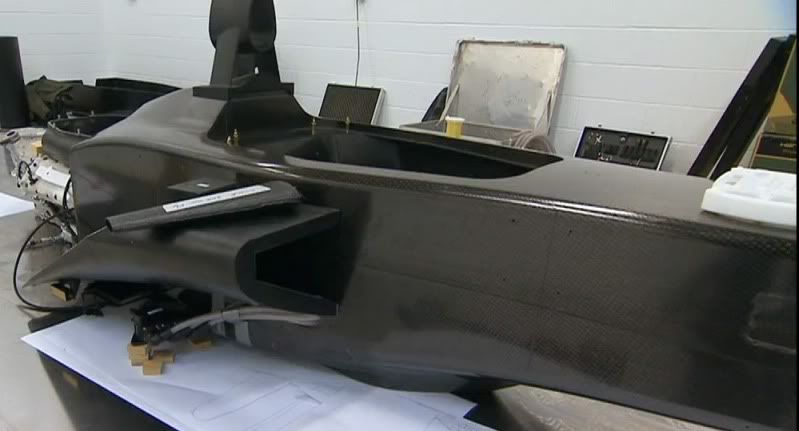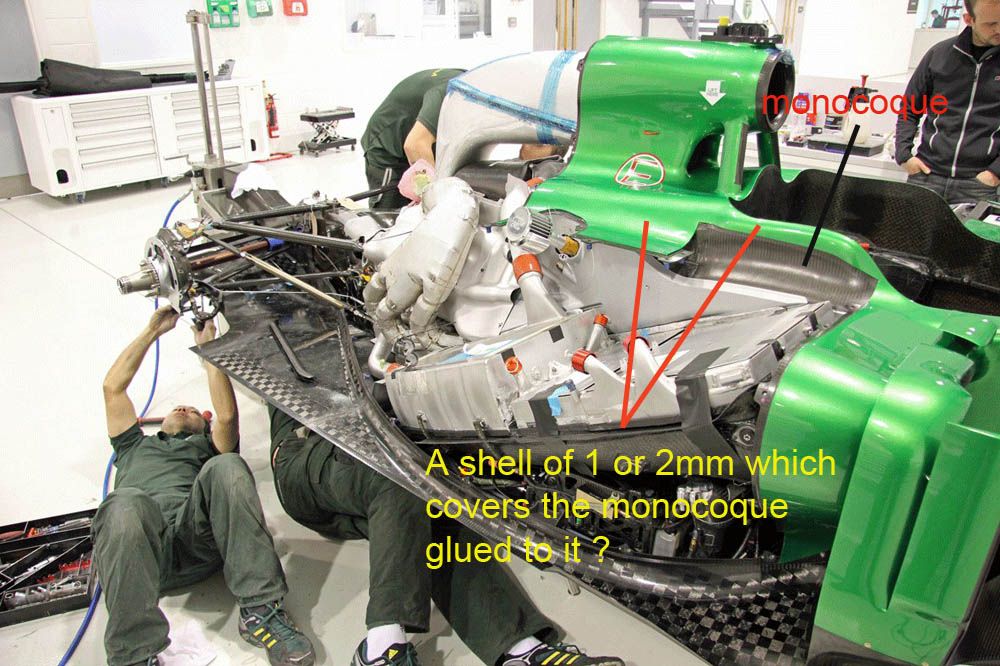The monocoque is formed from a female mould where there are inserts which are drilled and bonded into the carbon which then the rest of the car is bolted together into, but all of it is designed to break to absorb energy when in a crash. Only the survival cell is designed to not crumple and there are strict rules about the strength of the tub.

F1 Technical Regulations 2017 wrote:Bodywork may deflect no more than 5mm vertically when a 4000N load is applied vertically to it at three different points which lie on the car centre line and 100mm either side of it. Each of these loads will be applied in an upward direction at a point 480mm rearward of the front wheel centre line using a 50mm diameter ram in the two outer locations and a 70mm diameter ram on the car centre line
...
The survival cell must also be subjected to five separate static load tests :
1) On a vertical plane passing through the centre of the fuel tank.
2) On a vertical plane passing through the rearmost point at which the outer end of the forward-most front wheel tether would make contact with the survival cell when swung about the inner attachment.
3) From beneath the fuel tank.
4) On each side of the cockpit opening.
5) From beneath the cockpit floor.
Details of the test procedures may be found in Article 18.2, 18.3, 18.4 and 18.5.
...
Principal roll structure test :
A load equivalent to 50kN laterally, 60kN longitudinally in a rearward direction and 90kN vertically, must be applied to the top of the structure through a rigid flat pad which is 200mm in diameter and perpendicular to the loading axis. During the test, the roll structure must be attached to the survival cell which is supported on its underside on a flat plate, fixed to it through its engine mounting points and wedged laterally by any of the static load test pads described in Article 18.2.
Secondary roll structure test :
A vertical load of 75kN must be applied to the top of the structure through a rigid flat pad which is 100mm in diameter and perpendicular to the loading axis. The loading axis must be aligned with the highest point of the structure. During the test, the rollover structure must be attached to the survival cell which is fixed to a flat horizontal plate.
So yes, everything you see around the "cockpit" is bolted to this survival cell - everything is structural in some way (even the engine and gearbox).



